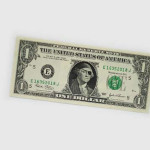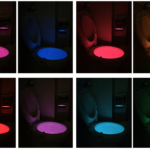
Look, we need to be straight with you: an air popper will never naturally make movie theater popcorn. But here’s the real story—you can get closer than you think with the right machine and a simple post-popping protocol that takes three minutes.
The Fundamental Problem (And Why It Matters)
Movie theater popcorn tastes the way it does because it’s cooked in oil. That fat does three critical things: it coats the kernel instantly, carries flavor compounds into every surface crack, and creates that signature heavy, crispy texture.
Air poppers? They use nothing but hot air. The result is a bone-dry kernel with almost zero fat coating. When you try adding butter afterward, you hit a wall: regular butter is 15-20% water. Pour that onto hot, crispy popcorn and it turns into a soggy, chewy mess within seconds.
This isn’t a limitation you can engineer away with a fancy motor. It’s chemistry.
But here’s what changes the game: You can compensate. Not by changing the machine, but by changing what you do after the kernels pop.
The Efficiency Benchmark: Presto PopLite Hot Air Popper
Presto 04870 Poplite Hot Air Popcorn Popper [click to view…]
If you want the technically superior air popper—fastest, most reliable, lowest waste—stop looking.
Presto PopLite Hot Air Popper
- Wattage: 1,475W
- Capacity: Up to 18 cups per batch
- Popping Speed: Under 2.5 minutes
- Unpopped Kernels: ~2% (exceptionally low)
- Price: $35–$43
This machine is the undisputed champion of consumer air poppers. Its 1,475W power output generates a forceful, circulating air stream that heats kernels with speed and consistency. That high wattage matters: kernels pop faster, steam doesn’t build up, and you get fewer “duds” (unpopped kernels) pooling at the bottom.
The speed advantage is real. The Presto PopLite is approximately 30% faster than competing models, completing batches in under 2.5 minutes. Compare that to many competitors taking 3+ minutes, and you see why efficiency here prevents moisture from degrading the final crispness.
The catch: Despite its performance dominance, the Presto PopLite is cheap. For under $45, you’re getting industrial-grade efficiency. That low price is actually a sign you’re buying a well-optimized product without unnecessary markup.
Alternative: Dash Fresh Pop Popcorn Maker
DASH Hot Air Popcorn Popper [click to view…]
- Wattage: 1,400W
- Capacity: Up to 16 cups per batch
- Speed: ~20 seconds slower than Presto
- Unpopped Kernels: ~4%
- Price: $20–$25
The Dash Fresh Pop is excellent if you prioritize budget and compact size. It’s highly efficient for the price, though measurably slower and produces slightly more unpopped kernels than the Presto.

Why wattage matters this much: The 1,400–1,475W range appears to be the optimal thermal threshold for consumer-level hot air poppers. Below this range, you get slower popping and more duds. Go much higher on standard 120V residential circuits, and you risk component failure. The leaders in this category have already solved this optimization problem.
The Reality Check: Why Air Poppers Can’t Match Movie Theater Flavor (Naturally)
Here’s the scientific disconnect:
Movie Theater Method:
- Kernels pop in refined coconut oil
- Fat instantly coats the popping kernel
- Seasoning (like Flavacol, a micro-pulverized salt used in cinemas) bonds to the fat layer
- Result: Crispy exterior with fat-embedded flavor
Air Popper Method:
- Kernels pop in circulating hot air
- Dry kernel emerges with minimal surface moisture
- Attempt to add butter post-pop introduces water, causing immediate sogginess
- Dry seasonings won’t stick to a bone-dry surface
- Result: Bland, dry popcorn with seasoning pooling at the bottom
This isn’t a design flaw in the Presto PopLite—it’s a fundamental constraint of the air-popping method.
How To Actually Get Close: The Three-Step Protocol
You’ll never get identical movie theater popcorn from an air popper. But this methodology gets you 80% of the way there, and it works:
Step 1: Apply an Anhydrous Fat Binding Agent
This is non-negotiable: Do not use regular butter.
Standard melted butter contains ~18% water. That water will destroy the crispness you just spent 2.5 minutes engineering.
Instead, use one of these:
- Clarified Butter (Ghee): Butter with all water and milk solids removed. Pure fat.
- Refined Coconut Oil: The closest match to commercial theater oil, without transmitting a coconut taste.
Application method: Melt 2–4 tablespoons of your chosen fat. While the popped corn is still warm (but not steaming), drizzle the fat slowly and thinly while gently tossing. Uniform distribution is critical—dump it all in one spot and you’ll create a soggy cluster. Think of it as a light coating, not a drenching.
Why this works: Fat acts as an adhesive for seasonings. Without it, nothing sticks to the dry kernel surface.
Step 2: Apply Micro-Pulverized Seasoning
Regular table salt won’t cut it. You need Flavacol Popcorn Salt.
Gold Medal Prod Flavacol Seasoning Popcorn Salt [click to view…]
This is what movie theaters actually use. It’s been micro-pulverized to an extremely fine particle size, creating maximum surface area for adhesion. Standard salt grains are too large to stick to a minimal fat coating.
Application method: Mix the Flavacol directly into your melted fat before drizzling it onto the popcorn. This ensures the fine salt particles are carried onto the kernel surface by the fat.
Alternatively, if you’re applying it dry, sprinkle it in multiple small layers (not one big dump) immediately after fat application. If you only have standard salt, pulverize it using a spice grinder or mortar and pestle to approximate the micro-particle size.
Step 3: Vigorous Tossing (The Kinetic Dispersion Step)
This is the step most people skip, and it’s why they end up with uneven seasoning.
Immediately after applying fat and seasoning, transfer the popcorn to a large, lidded container. Seal it. Shake it hard for 20–30 seconds.
This vigorous motion ensures the minimal amount of fat and fine seasoning reaches every kernel, preventing clumping and guaranteeing even coverage. This step is essential precisely because you’re working with a dry base that doesn’t naturally absorb coatings like oil-popped corn does.

The High-Priced Alternative: When You Want True Movie Theater Authenticity
If you’ve read this far and thought, “I just want it to work naturally without all this post-popping fussing,” there’s a different category of machines that do this natively: commercial-grade electric kettle poppers.
These machines heat kernels directly in oil, so the fat coating and seasoning adhesion happen during popping, not after.
Paragon 1911 Original 8 Ounce Popcorn Machine
Paragon Popcorn Machine [click to view…]
- Popping Type: Electric kettle (oil-based)
- Price: $630–$792
- Kettle Capacity: 8 ounces (~16 cups popped)
- Output: Commercial-grade, continuous operation capability
- Key Feature: Built-in warming deck keeps popcorn fresh and hot
This is the definitive “splurge” option if you want genuine movie theater quality without the work-around protocol.
The Paragon operates at approximately 1,420W—virtually identical to the Presto PopLite’s 1,475W. So why does it cost 15–20 times more? The price premium reflects:
- Stainless steel food zone with tempered glass panels
- Heavy-duty gear motor
- Hard-coat anodized aluminum kettle for superior heat conduction
- Integrated warming deck (a signature commercial feature)
- Capacity and design enabling continuous production without cool-down
The Paragon’s kettle popping method natively achieves the crisp, flavor-infused texture that air poppers cannot replicate. Seasoning and fat coat during the popping process, not after.
Premium Stovetop Alternative: Popsmith The Popper
Popsmith Popcorn Popper in Butter [click to view…]
- Popping Type: Premium stovetop oil popper
- Price: $184–$229
- Key Feature: Multi-clad stainless steel, patented stirring mechanism
- Best For: Users who want aesthetic design + superior durability + oil-popped results
The Popsmith bridges the gap between consumer models and the commercial Paragon. Its multi-clad construction distributes heat evenly, and the stirring mechanism prevents scorching while ensuring consistent batches. It works on gas, electric, and induction cooktops.
Procurement Checklist: Ingredients You’ll Actually Need
Regardless of which machine you choose, if you’re using an air popper and want authentic flavor, these are non-negotiable:
- Flavacol Popcorn Salt: The micro-pulverized seasoning used in actual movie theaters. Available on Amazon.
- Refined Coconut Oil or Clarified Butter (Ghee): Your anhydrous fat binder. Refined coconut oil is recommended because it replicates the commercial popping oil without adding flavor.
- Large Lidded Container: For the vigorous tossing step.
Final Recommendation
If you want the best air popper for efficiency and speed: Buy the Presto PopLite ($35–$43). It’s the technical leader. Understand upfront that achieving movie theater flavor requires the three-step post-popping protocol—but it works.
If you want true movie theater quality without the extra steps: Buy the Paragon 1911 ($630–$792) or the Popsmith The Popper ($184–$229). These kettle-based machines achieve authentic flavor naturally because they cook with oil.
The choice comes down to whether you’re optimizing for efficiency and budget, or for authentic taste and willingness to spend.
There’s no shame in either choice. Just know what you’re actually getting.













